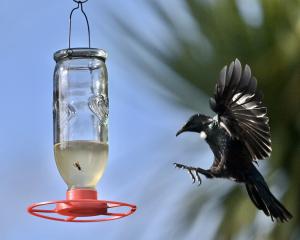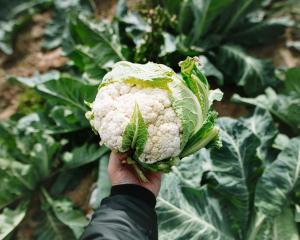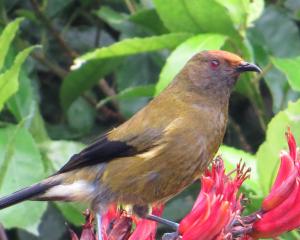Rhubarb is one of the easiest vegetables to grow, Gillian Vine says.
From now on, there's not much happening in the vegetable garden, except for clearing weeds and cleaning up garden rubbish, digging over empty areas and maybe sowing green manure crops such as oats and lupins.
It is a good time, though, to prepare a new rhubarb bed or enlarge an existing one.
A long time ago, someone came up with the phrase "gross feeder" to describe plants that like vast amounts of compost or rotted manure and the term perfectly describes rhubarb. It will grow adequately in average soil but add lots of manure and it responds with fatter, juicier stems.
One thing rhubarb doesn't care for, though, is lime, as it does best in a fairly acid soil. Instead, apply aluminium sulphate (50g per square metre) two or three times during the growing season, watering it in well.
That makes it sound harder to grow than it is - rhubarb is a real toughie and is almost disease-free, although it occasionally suffers from root rot.
Another plus is that plants will produce for up to 10 years.
A perennial plant, rhubarb (Rheum x hybridum) belongs to the same family as the dock. Native to Russian, China, Mongolia and parts of the Middle East, it was introduced to England in the 16th century as a medicine, the ground roots used to treat constipation.
The leaves, which have toxic levels of oxalic acid, can kill, so people probably regarded the stems with suspicion, but by the 18th century rhubarb was being eaten in late winter and early spring - the "hungry months" - when winter supplies ran out and food was scarce.
Rhubarb took a forward leap when a London nurseryman, Joseph Myatt, began breeding new varieties with thicker, juicier stems. One of Myatt's best was Victoria, bred in 1837, and it is still one of the best available.
By accident, it was discovered that rhubarb could be forced to produce tender early stems by covering the plants (crowns) before the new season's growth came through the ground.
The Victorians produced earthenware pots especially for this but a large terracotta flowerpot works just as well.
Turn it upside down over the plant and plug the drainage hole to keep out the light.
Some gardeners put straw inside the pot to keep the soil warm.
If you can't be bothered with forcing, just wait for the rhubarb to come through naturally before gently tugging out the stems (cutting is a no-no, rhubarb experts say).
Take no more than a third of the stems to avoid weakening the plant and don't cut any from new plants the first year.
Rhubarb flowers come up on thick stems and when they bloom, look a bit like overblown cauliflowers.
Don't let them get to this stage but cut them off as soon as they appear, as leaving them weakens the plant.
In winter, spread a good layer of compost and about 50g of Nitrophoska Blue over each plant, then work another 50g of Nitrophoska around the plants in spring.
Most rhubarb dies down in autumn, but there are winter varieties that can be cut all year round. These tend to be inferior to the spring/summer types, so it is recommended that both kinds are grown.
Propagation
Rhubarb can be grown from seed sown in spring. Existing plants can be divided in autumn or winter and cut so each piece has one or two buds; plant with the buds just below the soil surface. Garden centres sell rhubarb plants, usually named varieties.












